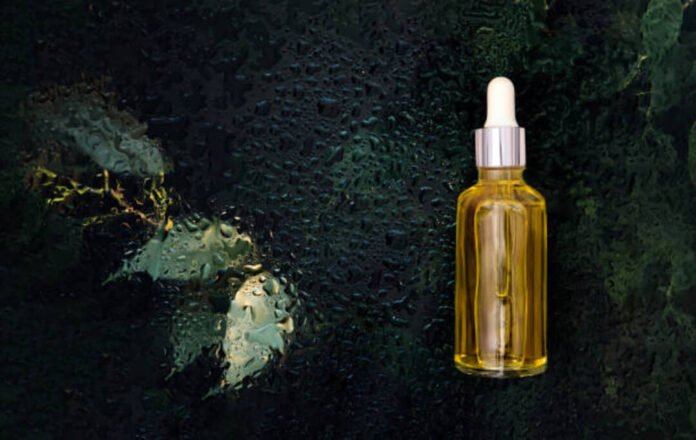When it comes to skincare, finding a product that works equally well for oily and dry skin types often feels impossible. Most moisturizers either leave oily skin feeling greasy or fail to provide enough hydration for dry skin. Surprisingly, jojoba oil is one of the rare natural solutions that can balance both. Derived from the seeds of the Simmondsia chinensis plant, jojoba oil is technically a liquid wax ester that closely resembles the skin’s own natural sebum. This unique property makes it a versatile ingredient for balancing oil production, preventing dehydration, and supporting overall skin health.
In this blog, we’ll explore why jojoba oil works for different skin types, how it restores balance, and ways to include it in your skincare routine.
What Makes Jojoba Oil Unique?
Unlike other plant oils, jojoba oil is not a triglyceride but a wax ester, which is structurally similar to human sebum. This allows it to:
- Absorb quickly without clogging pores.
- Mimic the skin’s natural oils.
- Provide long-lasting hydration.
Non-Comedogenic and Skin-Friendly
On the comedogenic scale, jojoba oil ranks very low, meaning it is unlikely to clog pores. This makes it suitable for both oily, acne-prone skin and dry, sensitive skin.
Jojoba Oil for Oily Skin
Regulates Sebum Production
Excess oil production often leads to shiny skin, clogged pores, and breakouts. Applying jojoba oil can “trick” the skin into thinking it has produced enough sebum. As a result, oil production slows down naturally.
Prevents Acne Breakouts
Because jojoba oil is lightweight and non-greasy, it doesn’t sit heavily on the skin. Its antibacterial and anti-inflammatory properties also help reduce acne-causing bacteria and calm redness.
Balances Shine Without Over-Drying
Unlike harsh acne treatments that strip oils, jojoba oil balances oil levels without leaving the skin dehydrated. This makes it a better alternative to alcohol-based toners or over-drying cleansers.
Jojoba Oil for Dry Skin
Deep Moisturization
Jojoba oil acts as an emollient and occlusive, sealing in hydration and preventing water loss. This is particularly helpful for people with dry, flaky patches.
Restores Skin Barrier
Dry skin often means a weakened barrier. Jojoba oil contains vitamin E, fatty acids, and antioxidants that repair and strengthen the skin’s protective layer, making it more resilient.
Soothes Irritation
With its anti-inflammatory compounds, jojoba oil can calm redness, itching, and discomfort often associated with eczema or psoriasis.
How Jojoba Oil Balances Both Skin Types
Mimicking Natural Sebum
Because jojoba oil closely matches human sebum, it adapts to your skin’s needs.
- On oily skin, it reduces excess oil production.
- On dry skin, it provides hydration and locks in moisture.
Adaptogenic Properties
Think of jojoba oil as a natural “skin regulator.” It gives oily skin less reason to overproduce sebum, while simultaneously nourishing dry areas. This dual-action effect makes it safe for combination skin as well.
Additional Skin Benefits of Jojoba Oil
Anti-Aging Support
Jojoba oil is rich in antioxidants that help protect against free radical damage, reducing the appearance of fine lines and wrinkles.
Enhances Absorption of Other Products
When used as a carrier oil, it helps other active ingredients like hyaluronic acid, retinol, or vitamin C penetrate more effectively.
Promotes Wound Healing
Research suggests jojoba oil supports wound healing and may accelerate skin repair after irritation or minor cuts.
How to Use Jojoba Oil in Your Skincare Routine
As a Moisturizer
Apply 2–3 drops of jojoba oil directly to damp skin or mix it with your daily moisturizer for enhanced hydration.
As a Cleanser
Jojoba oil can be used in the oil cleansing method to dissolve makeup, sunscreen, and impurities without stripping the skin.
For Spot Treatment
Dab a small amount on acne-prone areas or dry patches for targeted relief.
In DIY Skincare
Jojoba oil blends well with essential oils like tea tree, lavender, or rosehip for custom serums.
Tips for Using Jojoba Oil Effectively
- Always choose cold-pressed, organic jojoba oil for maximum benefits.
- Start with a patch test if you have sensitive skin.
- Use sparingly—too much may feel heavy even though it won’t clog pores.
- Store in a cool, dark place to preserve its quality.
Final Thoughts
Jojoba oil is a powerful yet gentle skincare ingredient that works harmoniously with both oily and dry skin. Its ability to regulate sebum production, strengthen the skin barrier, and provide hydration makes it one of the most versatile natural oils available. Whether you struggle with acne, dryness, or combination skin, incorporating jojoba oil into your routine can help achieve healthy, balanced, and glowing skin.
Frequently Asked Questions (FAQs)
1. Is jojoba oil safe for acne-prone skin?
Yes, jojoba oil is non-comedogenic and helps regulate sebum production, making it safe and beneficial for acne-prone skin.
2. Can jojoba oil replace moisturizer?
Yes, it can be used as a standalone moisturizer or mixed with your cream for extra hydration.
3. How often should I use jojoba oil?
It’s safe for daily use, morning or night, depending on your skin’s needs.
4. Does jojoba oil help with wrinkles?
Yes, it contains antioxidants like vitamin E that fight free radical damage and support anti-aging.
5. Can I use jojoba oil on combination skin?
Absolutely. It adapts to different areas, reducing oiliness where needed and hydrating dry patches.



